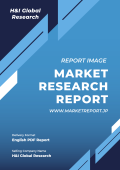| 【英語タイトル】Vitamin D Supplements Market - Growth, Trends, Covid-19 Impact, and Forecasts (2023 - 2028)
|
 | ・商品コード:MOR23AL034
・発行会社(調査会社):Mordor Intelligence
・発行日:2023年1月23日
・ページ数:100
・レポート言語:英語
・レポート形式:PDF
・納品方法:Eメール(受注後2-3営業日)
・調査対象地域:アメリカ、カナダ、メキシコ、スペイン、イギリス、ドイツ、フランス、イタリア、ロシア、中国、日本、インド、オーストラリア、ブラジル、アルゼンチン、南アフリカ、UAE
・産業分野:食品
|
◆販売価格オプション
(消費税別)
※販売価格オプションの説明
※お支払金額:換算金額(日本円)+消費税
※納期:即日〜2営業日(3日以上かかる場合は別途表記又はご連絡)
※お支払方法:納品日+5日以内に請求書を発行・送付(請求書発行日より2ヶ月以内に銀行振込、振込先:三菱UFJ銀行/H&Iグローバルリサーチ株式会社、支払期限と方法は調整可能)
|
❖ レポートの概要 ❖
Mordor Intelligence社の本調査レポートでは、世界のビタミンDサプリメント市場規模が、予測期間中(2023年-2028年)に年平均7.34%で成長すると予測しています。本レポートでは、ビタミンDサプリメントの世界市場について調べ、イントロダクション、調査手法、エグゼクティブサマリー、市場動向、商品種類別(ビタミンD2、ビタミンD3)分析、流通チャネル別(スーパー/ハイパーマーケット、薬局/健康食品店、オンライン販売、その他)分析、地域別(北米、ヨーロッパ、アジア太平洋、南米、中東・アフリカ、アメリカ、カナダ、メキシコ、スペイン、イギリス、ドイツ、フランス、イタリア、ロシア、中国、日本、インド、オーストラリア、ブラジル、アルゼンチン、南アフリカ、UAE)分析、競争状況、市場機会・将来の動向など、以下の構成でまとめています。また、Amway Corporation、General Nutrition Centers Inc.、The Nature's Bounty Co.、Pfizer Inc.、Otsuka Holdings Co. Ltd、Everidis Health Sciences LLC、Sapien Products LLC、THQ Nordic AB、GHC Holdings Inc.、Bayer Agなどの企業情報が含まれています。
・イントロダクション
・調査手法
・エグゼクティブサマリー
・市場動向
・世界のビタミンDサプリメント市場規模:商品種類別
- ビタミンD2サプリメントの市場規模
- ビタミンD3サプリメントの市場規模
・世界のビタミンDサプリメント市場規模:流通チャネル別
- スーパー/ハイパーマーケットチャネルの市場規模
- 薬局/健康食品店チャネルの市場規模
- オンライン販売チャネルの市場規模
- その他チャネルの市場規模
・世界のビタミンDサプリメント市場規模:地域別
- 北米のビタミンDサプリメント市場規模
アメリカのビタミンDサプリメント市場規模
カナダのビタミンDサプリメント市場規模
メキシコのビタミンDサプリメント市場規模
…
- ヨーロッパのビタミンDサプリメント市場規模
スペインのビタミンDサプリメント市場規模
イギリスのビタミンDサプリメント市場規模
ドイツのビタミンDサプリメント市場規模
…
- アジア太平洋のビタミンDサプリメント市場規模
中国のビタミンDサプリメント市場規模
日本のビタミンDサプリメント市場規模
インドのビタミンDサプリメント市場規模
…
- 南米のビタミンDサプリメント市場規模
ブラジルのビタミンDサプリメント市場規模
アルゼンチンのビタミンDサプリメント市場規模
…
- 中東・アフリカのビタミンDサプリメント市場規模
南アフリカのビタミンDサプリメント市場規模
UAEのビタミンDサプリメント市場規模
…
・競争状況
・市場機会・将来の動向 |
The global vitamin D supplements market is projected to grow at a CAGR of 7.34% during the forecast period (2023 – 2028).
With the sudden impact of COVID-19, the vitamin D market has witnessed an increase in demand for products that provide digestive and immune health, which has positively impacted the market. As a result, the sales of supplements such as proteins, vitamins, and omega-3 fatty acids have seen immense growth. This resulted in the launch of numerous new products to cater to the growing demand. Moreover, to satiate the surging demand and maintain safety norms, the manufacturers have been increasing their sales by encouraging consumers to shop online.
Dietary supplements are continuously evolving to cater to the niche population segments (pregnant and breastfeeding women, geriatric, and pediatric nutrition) due to intensive fortification initiatives governments undertake worldwide. The increasing awareness related to vitamin supplements has led to favorable sentiments toward the vitamin supplements market.
The demand for Vitamin-D supplements surged during the coronavirus pandemic, primarily due to the bulk buying behavior of consumers. It is speculated that bulk purchases are not merely a lockdown-induced trend but are expected to stay throughout 2020, as consumers are trying to reduce the number of store visits as a part of social distancing. Even while shopping for supplement products online, consumers tend to engage in bulk purchases to receive more value for their delivery charges.
Vitamin D Supplements Market Trends
Escalating Demand for Dietary Supplements Across the Globe
Dietary supplements, such as vitamins, minerals, botanicals, enzymes, fatty acids, and proteins, help promote general health and well-being by preventing nutritional deficiency diseases. The preferences for dietary supplements are growing tremendously due to the global demographic trend with the rising aging population, increasing lifestyle-related diseases, and increasing healthcare costs. As a result of the increasing demand for dietary supplements, many countries are importing these supplements to meet their demand. For instance, according to UN Comtrade, in 2020, the United States was the world’s leading importer of vitamin products. United States imported worth USD 1.5 billion, followed by Germany, France, and the Netherlands. Increasing sales of sports nutrition on account of growing fitness trends and sports activity, with new product launches, is likely to significantly impact the industry. Regulatory agencies are paying more attention to dietary supplement health claims, thus, the industry is becoming more regulated.
North America Holds the Largest Share
The Vitamin D market in the region is led by high cases of orthopedic and bone-related issues. According to a US Bone and Joint Health Initiative report, “One in two Americans have a musculoskeletal condition, costing an estimated USD 213 billion each year, in treatment and lost wages”. Additionally, an estimated 126.6 million Americans (one in two adults) are affected by a musculoskeletal condition- comparable to the total percentage of Americans living with a chronic lung or heart condition.Thus, the stats suggest a high burden on healthcare and consumers’ personal expenditure that goes into the cure of bone treatment, increasingly leading them toward a better alternative industry of vitamin D supplements.
Vitamin D Supplements Market Competitor Analysis
The global Vitamin D supplement market is highly fragmented owing to several global, regional, and local players. Key players in the market include Pfizer, Nature’s Bounty Co, Amway Corporation, Pfizer Inc., and GlaxoSmithKline plc., which hold a major market share. The established players in the market are focusing on rapid expansion and new product launches to gain a better market share, efficient results, and a competitive edge over newer competitors. Expansion is another major strategy by key players to scale up their production efficiencies and develop niche offerings that cater to the customization requirements of consumers.
Additional Benefits:
- The market estimate (ME) sheet in Excel format
- 3 months of analyst support
1 INTRODUCTION
1.1 Study Assumptions and Market Definition
1.2 Scope of the Study
2 RESEARCH METHODOLOGY
3 EXECUTIVE SUMMARY
4 MARKET DYNAMICS
4.1 Market Drivers
4.2 Market Restraints
4.3 Porter’s Five Forces Analysis
4.3.1 Threat of New Entrants
4.3.2 Bargaining Power of Buyers/Consumers
4.3.3 Bargaining Power of Suppliers
4.3.4 Threat of Substitute Products
4.3.5 Intensity of Competitive Rivalry
5 MARKET SEGMENTATION
5.1 By Product Type
5.1.1 Vitamin D2 Supplements
5.1.2 Vitamin D3 Supplements
5.2 By Distribution Channel
5.2.1 Supermarkets/Hypermarkets
5.2.2 Pharmacies/Health Stores
5.2.3 Online Retailing
5.2.4 Other Distribution Channels
5.3 Geography
5.3.1 North America
5.3.1.1 United States
5.3.1.2 Canada
5.3.1.3 Mexico
5.3.1.4 Rest of North America
5.3.2 Europe
5.3.2.1 Spain
5.3.2.2 United Kingdom
5.3.2.3 Germany
5.3.2.4 France
5.3.2.5 Italy
5.3.2.6 Russia
5.3.2.7 Rest of Europe
5.3.3 Asia-Pacific
5.3.3.1 China
5.3.3.2 Japan
5.3.3.3 India
5.3.3.4 Australia
5.3.3.5 Rest of Asia-Pacific
5.3.4 South America
5.3.4.1 Brazil
5.3.4.2 Argentina
5.3.4.3 Rest of South America
5.3.5 Middle-East & Africa
5.3.5.1 South Africa
5.3.5.2 United Arab Emirates
5.3.5.3 Rest of Middle-East & Africa
6 COMPETITIVE LANDSCAPE
6.1 Most Active Companies
6.2 Most Adopted Strategies
6.3 Market Share Analysis
6.4 Company Profiles
6.4.1 Amway Corporation
6.4.2 General Nutrition Centers Inc.
6.4.3 The Nature’s Bounty Co.
6.4.4 Pfizer Inc.
6.4.5 Otsuka Holdings Co. Ltd
6.4.6 Everidis Health Sciences LLC
6.4.7 Sapien Products LLC
6.4.8 THQ Nordic AB
6.4.9 GHC Holdings Inc.
6.4.10 Bayer Ag
7 MARKET OPPORTUNITIES AND FUTURE TRENDS
8 IMPACT OF COVID-19 ON THE MARKET











